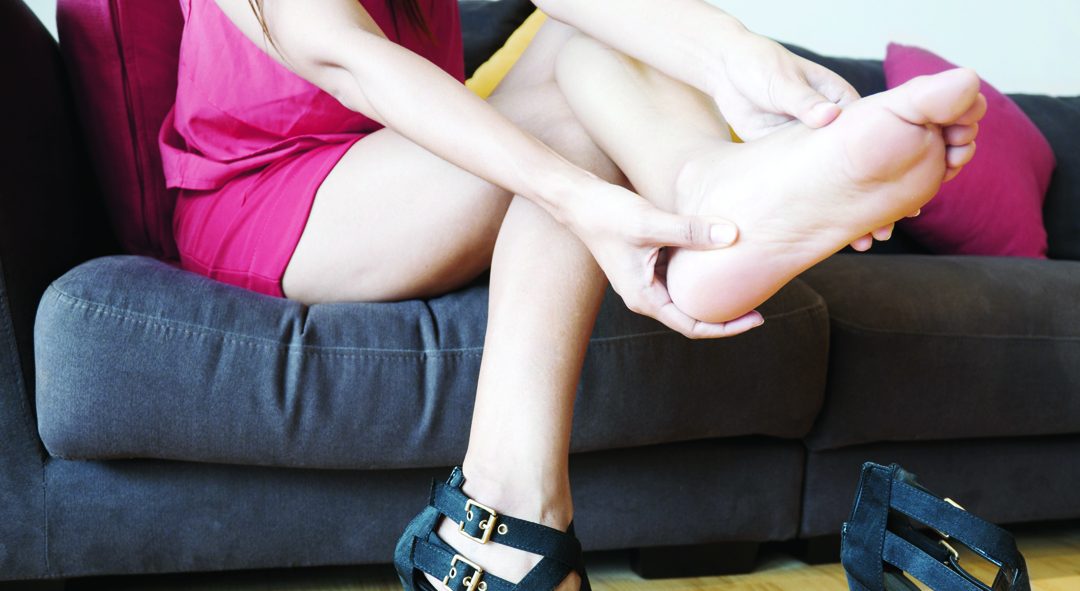Plantar fasciitis is a painful condition affecting the bottom of the heel and/or the arch of the foot. It is characterised by pain at the first few steps in the morning or after long periods of rest. This injury is a result of excessive stress on the plantar fascia (thick band of connective tissue that runs from the bottom of the heel to the toes). Stress mostly occurs around its attachment site in the heel, and pain can usually be palpated at the inside of the bottom of the heel, just where the arch starts. Some common causes can be:
• Acute injury
• Excessive weight
• Long hours of standing (especially on hard surfaces)
• Poor foot biomechanics
• Poor footwear
• Restrictions in movement at the ankle, from tight calf muscles or stiffness in the joint
• Weakness in foot or leg muscles
When it comes to treating plantar fasciitis, there is no one size fits all treatment. The causative factors need to be identified and treated, for example, if poor foot biomechanics are contributing to the injury, strapping and orthotics will be included in the management plan.
Treatment methods may include:
Orthotics: Orthotics are inserts that are worn inside your shoes. They can help reduce heel pain by improving foot movements and redistributing forces from the injured tissue.
Podiatrists offer specific advice regarding the various orthotic options available and what is most appropriate for each individual.
Ice: Applied onto the heel area as advised by your Podiatrist.
Rest and reduced activity: resting or reducing the workload of the heel allows your body to repair itself. While this is often much easier said than done, taking some time off your feet is very important in the recovery of plantar fasciitis.
A program of daily exercises: The latest research into plantar fasciitis has shown that specific foot exercises are effective in treating the condition. The exercises help improve the structure of the tissue within the fascia, and also improve the strength of the supporting muscles and tendons in the feet and legs, which in turn can reduce the workload of the plantar fascia. A specific program should be tailored for each individual by a podiatrist.
Footwear advice: Shoes specifically designed to prevent plantar fascia stress have been developed. These shoes provide adequate shock absorption, torsional stability and encourage efficient movement throughout the gait cycle.
Stretching program: Stretches specific to the plantar fascia have been shown to improve symptoms. Tightness in certain muscle groups may have been identified as a contributing factor, and a specific stretching program for these muscles (ie calf muscles) can be beneficial too.
Injections: injection therapy, also known as prolotherapy, involves injecting damaged tissues with glucose and saline. This stimulates the body’s repair process and allows the tissue to heal. This is a good option in the case of chronic heel pain (when the injury has lasted more than 6 months). Other injection options include PRP (Platelet rich plasma) or cortisone injections.
Extracorporeal shock wave therapy: This treatment requires multiple treatments and is helpful in long standing cases of plantar fasciitis.
It is essential that treatment is commenced as early as possible to gain the best outcomes. Plantar fasciitis can be hard to treat if chronic, so don’t delay in making an appointment with one of our podiatrists.

